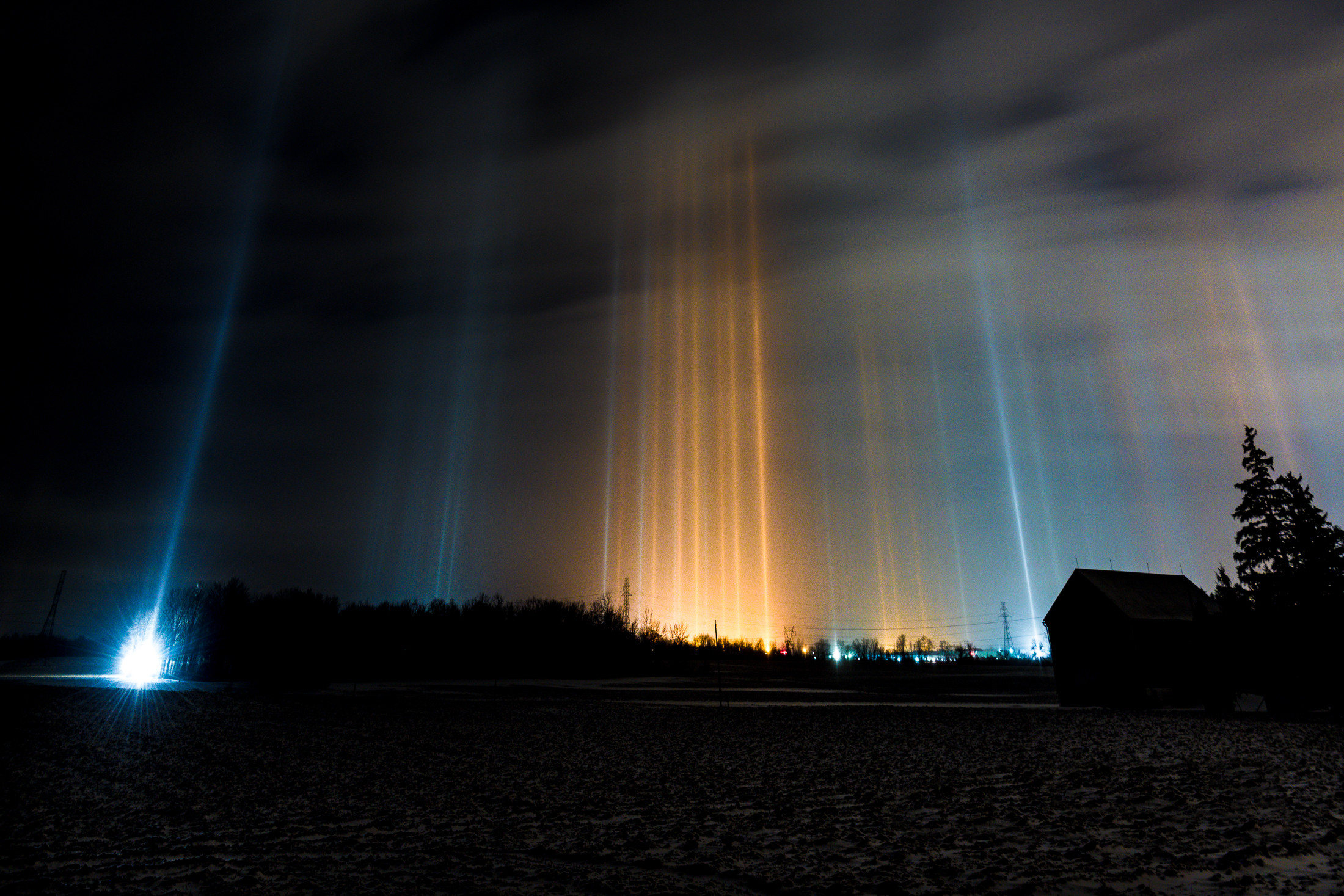The sky has long fascinated humans, serving as a source of inspiration, mystery, and scientific curiosity. While we are all familiar with rainbows and sunsets, the atmosphere is capable of creating far rarer and more astonishing displays. Some of the most breathtaking optical phenomena include Parhelia (sundogs), circumhorizon arcs, light pillars, and sun haloes. These spectacular events occur due to the interaction of sunlight with ice crystals in the atmosphere, forming dazzling patterns of light. Let’s take a closer look at these incredible sky spectacles.
1. Parhelia (Sundogs): The Phantom Suns
Parhelia, commonly known as sundogs, are bright spots that appear on either side of the sun, often forming a halo-like effect. They are created when sunlight passes through hexagonal ice crystals in cirrus or cirrostratus clouds. These crystals act as prisms, bending the light at an angle of approximately 22 degrees, causing two luminous spots to appear parallel to the sun.
Sundogs are usually most visible when the sun is low on the horizon. They can display vivid colors, with the inner edges appearing red while the outer edges fade into blues and whites. This phenomenon can be seen worldwide and is particularly common in colder regions where ice-crystal-laden clouds are more frequent.

2. Circumhorizon Arc: The Fire Rainbow
One of the most vibrant and mesmerizing atmospheric optical effects is the circumhorizon arc, often referred to as a “fire rainbow.” Despite the name, it is neither a fire nor a rainbow but rather a type of halo. It forms when sunlight passes through plate-shaped ice crystals in high-altitude cirrus clouds, refracting light at an angle of 46 degrees.
To witness a circumhorizon arc, the sun must be at least 58 degrees above the horizon, making it more common during summer at mid-latitudes. When conditions are right, a brilliant, horizontal streak of rainbow colors appears in the sky, resembling a fragment of an aurora. This phenomenon is less common than sundogs but is among the most visually striking celestial displays.

3. Light Pillars: Vertical Columns of Light
Light pillars are vertical beams of light that seem to extend above or below a light source, such as the sun, moon, or artificial lights. They form when light reflects off flat, hexagonal ice crystals suspended in the air. Unlike sundogs or haloes, light pillars are caused by reflection rather than refraction, giving them their distinct column-like shape.
These pillars can be seen in cold climates where ice crystals float close to the ground, particularly at night when streetlights and other artificial lights create dazzling vertical shafts. Sun and moon pillars are most common at sunrise or sunset when the light is at an angle that enhances their visibility. This phenomenon can give the sky an ethereal, almost otherworldly appearance.

4. Sun Halos: Rings of Ice and Light
Sun halos are among the most famous and frequently observed atmospheric optical phenomena. They appear as a luminous circle surrounding the sun, usually with a radius of 22 degrees. Halos form when sunlight is refracted and reflected by millions of tiny ice crystals in high-altitude clouds.
The most common type is the 22-degree halo, but other variations, such as the 46-degree halo and complex multiple halos, can also occur under specific conditions. Sun halos often signal the presence of cirrostratus clouds, which can indicate an approaching weather system. The beauty of a sun halo lies in its perfect symmetry and the subtle play of light that creates a ghostly, dreamlike effect in the sky.
The Sky’s Ever-Changing Art
These stunning atmospheric phenomena serve as reminders of nature’s ability to surprise and enchant us. While some, like sundogs and sun haloes, are relatively common, others, such as circumhorizon arcs and light pillars, require precise conditions to be visible. Regardless of their frequency, each of these displays offers a fleeting glimpse into the complex interplay of light, ice, and the atmosphere, turning the sky into a canvas of natural wonder. The next time you look up, keep an eye out—you might just witness one of these awe-inspiring spectacles.












